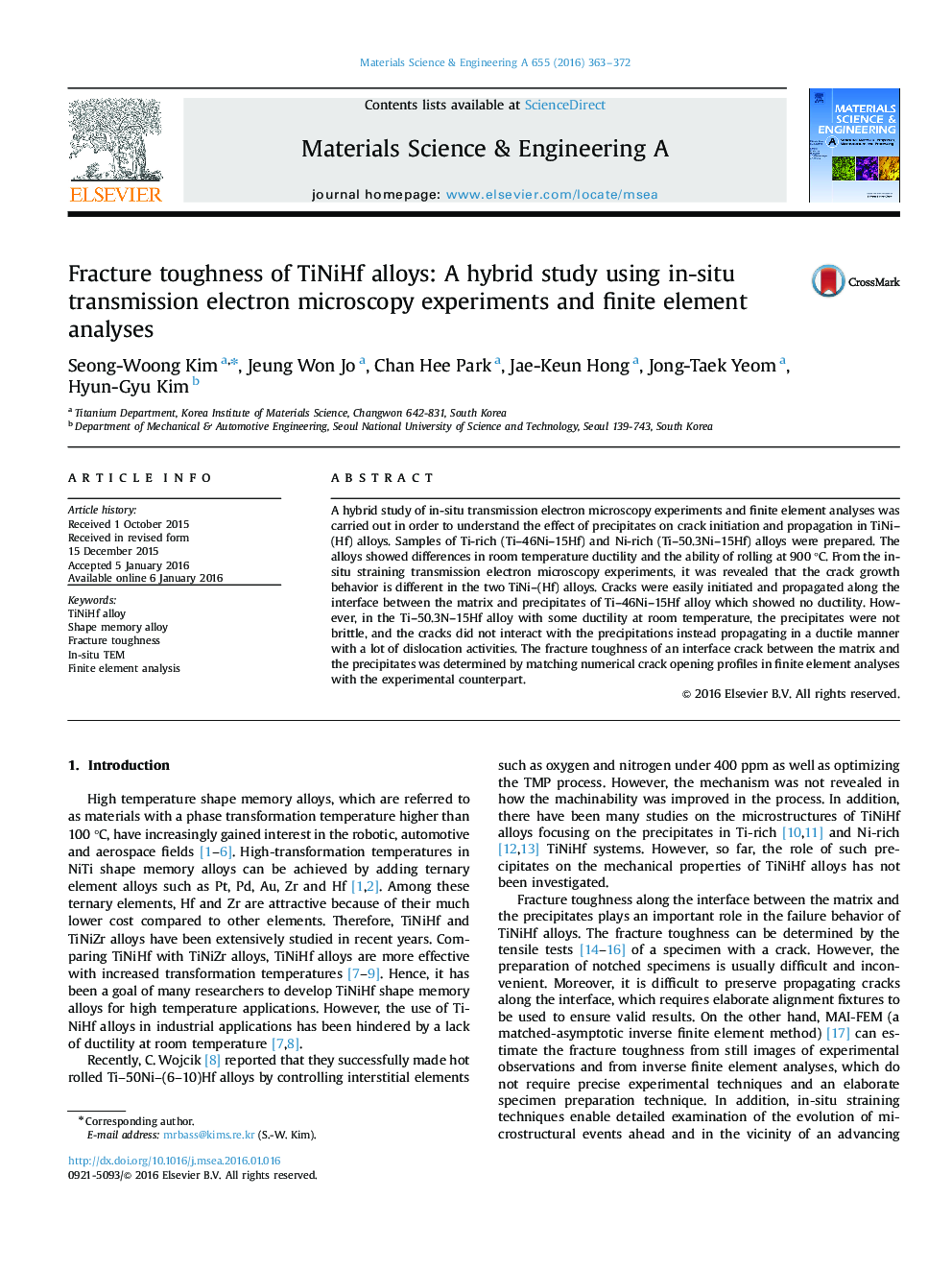| Article ID | Journal | Published Year | Pages | File Type |
|---|---|---|---|---|
| 1573707 | Materials Science and Engineering: A | 2016 | 10 Pages |
Abstract
A hybrid study of in-situ transmission electron microscopy experiments and finite element analyses was carried out in order to understand the effect of precipitates on crack initiation and propagation in TiNi-(Hf) alloys. Samples of Ti-rich (Ti-46Ni-15Hf) and Ni-rich (Ti-50.3Ni-15Hf) alloys were prepared. The alloys showed differences in room temperature ductility and the ability of rolling at 900 °C. From the in-situ straining transmission electron microscopy experiments, it was revealed that the crack growth behavior is different in the two TiNi-(Hf) alloys. Cracks were easily initiated and propagated along the interface between the matrix and precipitates of Ti-46Ni-15Hf alloy which showed no ductility. However, in the Ti-50.3N-15Hf alloy with some ductility at room temperature, the precipitates were not brittle, and the cracks did not interact with the precipitations instead propagating in a ductile manner with a lot of dislocation activities. The fracture toughness of an interface crack between the matrix and the precipitates was determined by matching numerical crack opening profiles in finite element analyses with the experimental counterpart.
Related Topics
Physical Sciences and Engineering
Materials Science
Materials Science (General)
Authors
Seong-Woong Kim, Jeung Won Jo, Chan Hee Park, Jae-Keun Hong, Jong-Taek Yeom, Hyun-Gyu Kim,
